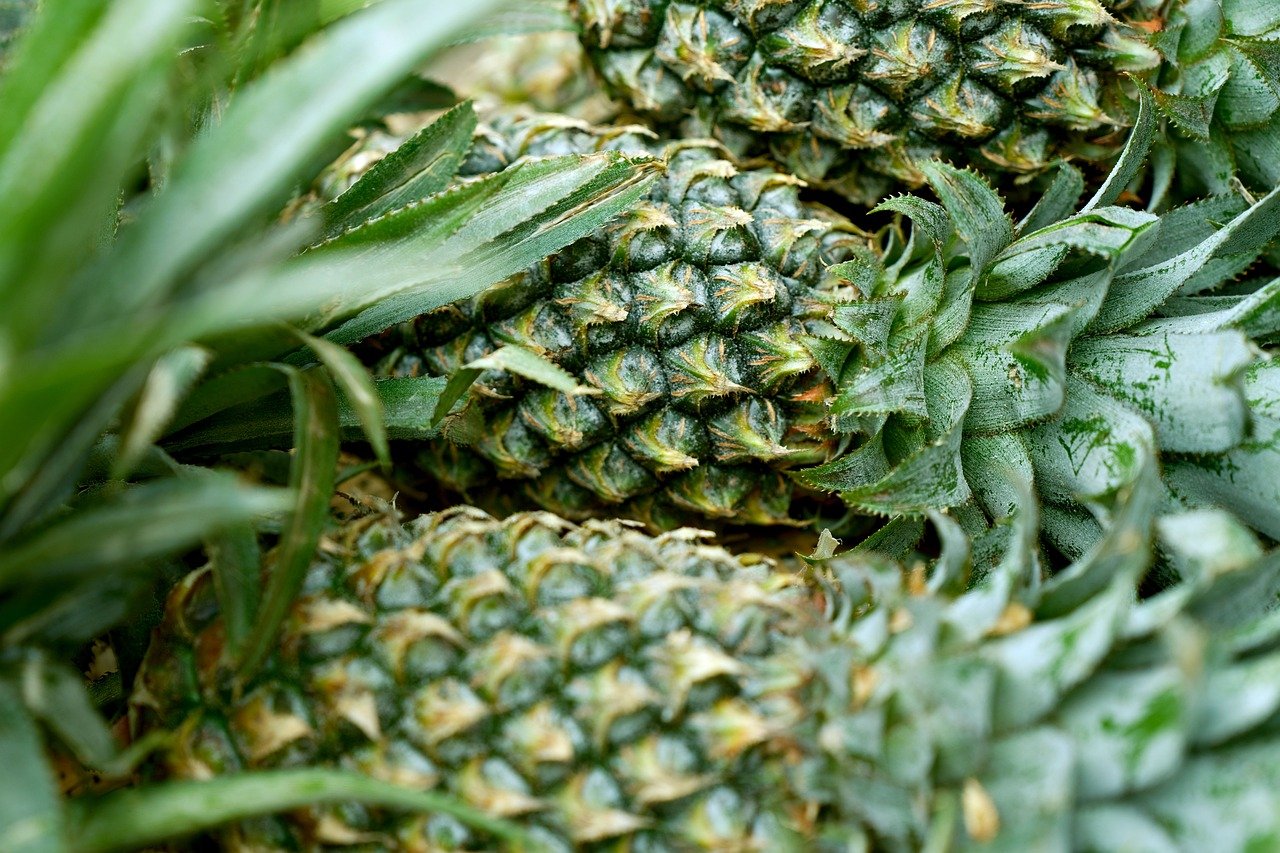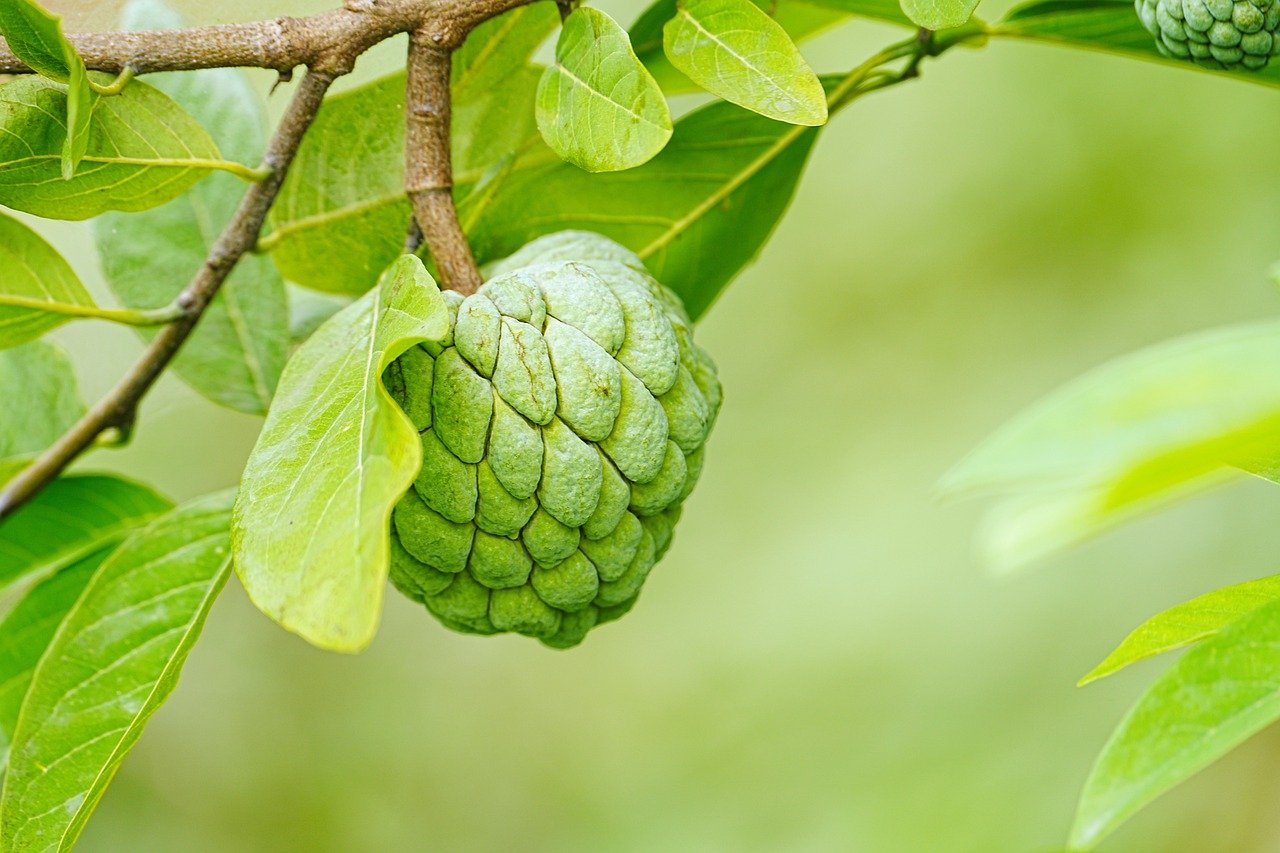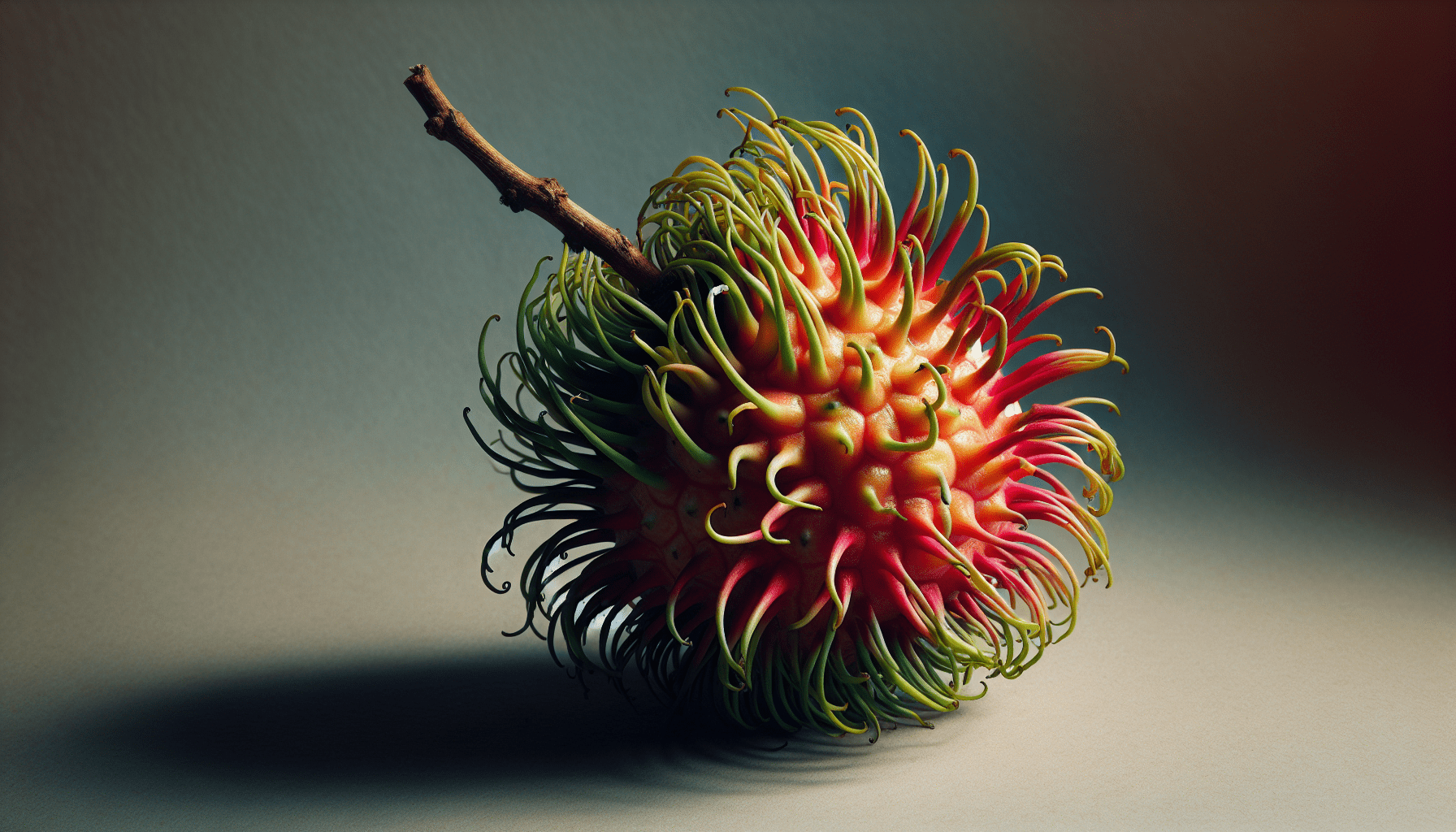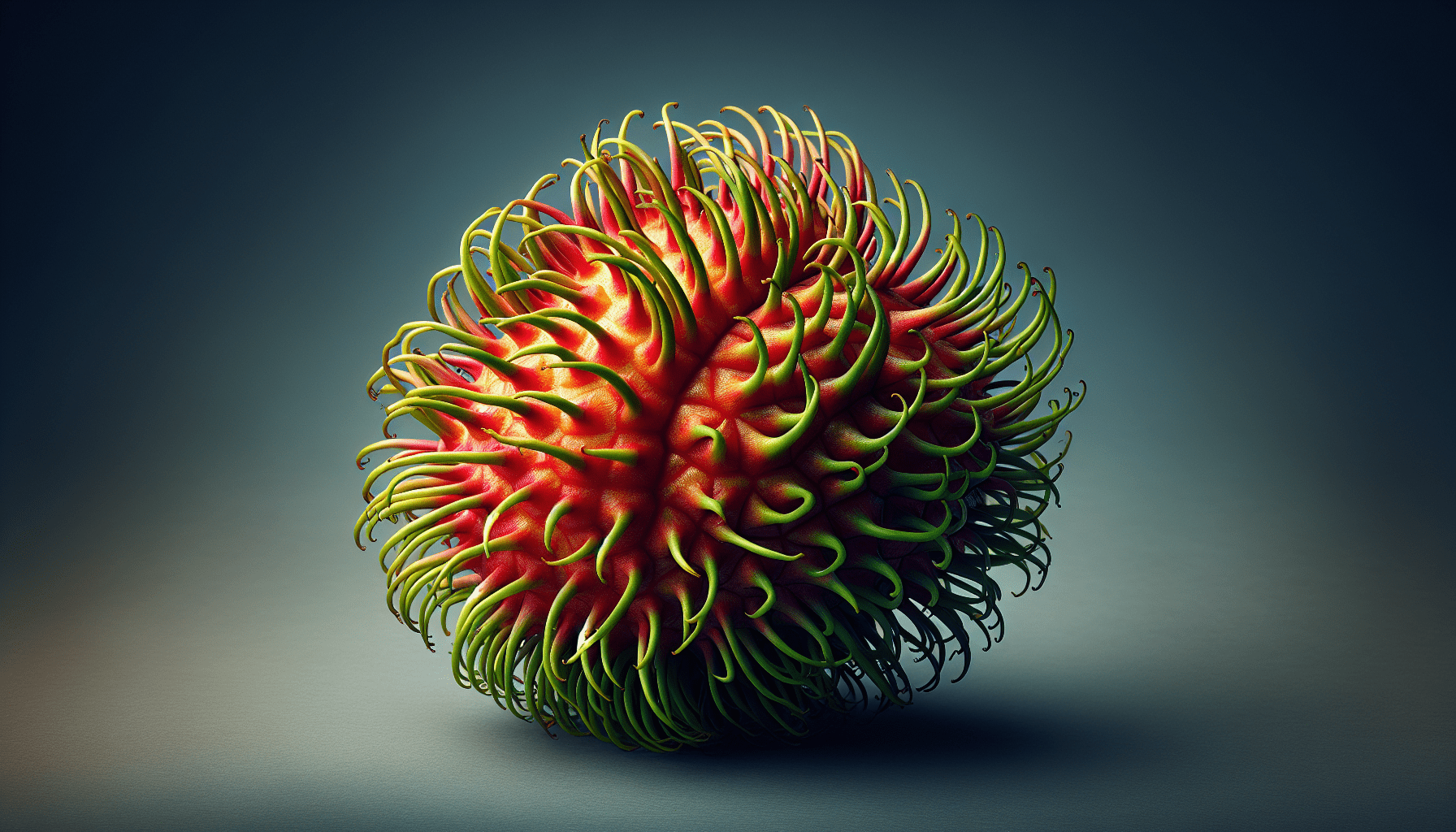Have you ever wondered just how many fruits in the world have a furry, fuzzy, or hairy exterior? It’s an element of nature that many overlook, yet it serves such significant roles—from protecting the fruit itself to adding a unique texture that makes these fruits stand out. Let’s take a closer look at some of these intriguing furry fruits that the world has to offer, and why you might want to give them a try.

Kiwi: The Fuzzy Foreign Fruit
When thinking about the quintessential furry fruit, the kiwi often comes to mind. Covered in fine, brown fuzz, the kiwi is a sensory delight both to touch and taste. The fuzz on a kiwi isn’t just for show; it has practical purposes. It helps protect the fruit from damage and aids in water retention, crucial for the fruit’s development.
Kiwis are native to China, but today they are grown in many parts of the world, including New Zealand and Italy. Often eaten fresh, kiwis are incredibly versatile—you can use them in salads, smoothies, or even as a topping for desserts. Rich in Vitamin C and antioxidants, they are as nutritious as they are peculiar in texture.
The Science Behind the Fuzz
The fine hair on the kiwi’s skin, technically known as trichomes, has multiple benefits. It serves not only as a shield against pests but also helps regulate the fruit’s moisture levels by reducing water loss. You’ll find that kiwis, despite their fuzzy exterior, are incredibly easy to peel. If the fuzz is off-putting, a quick peel will reveal the vibrant green fruit inside, replete with tiny black seeds and a refreshing taste.
Peach: The Velvet Delight
Another fruit that deserves your attention is the peach. Native to Northwest China, the peach has become a beloved fruit around the world. Its skin is covered with a fine, velvety layer of fuzz, giving it a unique texture that distinguishes it from other fruits. But this fuzz has a purpose; it protects the tender fruit inside from external damage and deters certain pests.
Peach Varieties and Their Uses
Peaches come in several varieties, ranging from the clingstone types, where the flesh clings to the stone, to the freestone types, where the stone easily separates from the flesh. The furry exterior may vary in thickness and density depending on the variety. Peaches are superb for consuming fresh, but they’re also fantastic in baked goods, jams, and even grilled dishes. Their high Vitamin C and A content makes them nutritious and delicious.
Fuzz and Peeling Options
If you find the peach fuzz bothersome, blanch the fruit in boiling water for a few seconds and then place it in ice water. The skin will slide right off. This technique retains the fruit’s integrity and flavor, making it easier to incorporate peaches into your culinary repertoire without the fuzz getting in the way.
Velvet Bean: An Unusual Contender
Moving from fruits to legumes, the velvet bean stands out for its significant fuzz factor. Known botanically as Mucuna pruriens, this legume sports pods encased in dense, velvety hairs. These hairs serve to protect the beans inside from pests and reduce moisture loss.
The Role of Hairy Pods
The fine hairs on the velvet bean have practical uses in their natural habitat. They act as deterrents for pests and help conserve moisture, proving that the bean’s furry exterior is more than just a quirky characteristic. Velvet beans are often used in traditional medicine and have found their way into modern supplements as sources of L-Dopa, a precursor to dopamine.
Culinary and Medicinal Uses
In terms of culinary usage, velvet beans are typically consumed after proper preparation, such as boiling or roasting, to remove toxins. They are common in certain diets, particularly in tropical regions. Beyond their culinary applications, velvet beans are celebrated in Ayurvedic medicine for various health benefits including stress reduction and improved cognitive function.
Furry Tomato Plants
Furry might not be the first adjective you think of when picturing tomato plants, yet certain varieties do possess tiny hair-like structures on their stems and leaves. These structures, known as trichomes, are multifaceted in their functionality. They protect the plant against insect pests, aid in moisture retention, and even produce aromatic compounds that can deter herbivores.
Trichomes: The Plant’s Defense Mechanism
Trichomes on tomato plants are essentially tiny hairs that serve vital roles. They help in coping with environmental stressors and warding off predators. Some trichomes can secrete sticky substances that trap insects, making it a natural form of pest control.
Tomato Varieties with Trichomes
Some tomato varieties are more hairier than others. The ‘Garden Peach’ tomato, for instance, has skins that mimic the fuzziness of a peach. Not only are these tomatoes eye-catching, but they’re also packed with flavor, making them a unique twist to your garden or plate.

Mulberries: Wild and Fuzzy
Another intriguing fruit with a furry quality is the mulberry. Native to temperate regions, mulberries often feature small, fine hairs on their skin. They can be red, black, or white and have a flavor profile that ranges from sweet to tart, making them versatile for various culinary uses.
Uses and Benefits
Mulberries are not just a treat for your taste buds; they offer numerous health benefits. Rich in vitamins, antioxidants, and fiber, they can be eaten fresh, used in jams, or even dried as a nutritious snack. Their slight fuzz adds a unique texture and character to an already delightful fruit.
Lamb’s Ear and Mullein: Furry Leaves of the Plant Kingdom
While not fruits, plants like lamb’s ear and mullein sport leaves covered in soft, velvety hairs. These plants are fascinating as they show how adaptation can result in similar textures across completely different types of plants for similar functional reasons.
Adaptation and Purpose
The furry leaves of lamb’s ear and mullein help these plants survive in harsh environments by reducing water loss and reflecting sunlight. The trichomes on these plants’ leaves are multifunctional, providing both protection from predators and a mechanism to conserve moisture.
Decorative and Medicinal Uses
Lamb’s ear, with its plush, silvery leaves, is often used in garden landscapes for its aesthetic value. Mullein, on the other hand, has been used traditionally in herbal medicine for treating respiratory ailments. These plants are a testament to how the plant kingdom uses fur-like textures for various survival strategies.

Curious Cases: Other Furry Finds
Beyond these common examples, nature has few more surprises in store. For example, certain varieties of apricots and nectarines also exhibit fuzz on their skins, though often less noticeable than kiwis and peaches.
Apricots and Nectarines
Apricots, closely related to peaches, have a similar but often subtler fuzzy exterior. Nectarines, essentially smooth-skinned peaches, can sometimes have tiny hairs, blending the line between smooth and fuzzy.
Other Unusual Furry Fruits
Moreover, some berries like cloudberries and certain types of gooseberries can exhibit furry characteristics at certain stages of their growth. These fruits are less common but fascinating examples of the diversity in the plant kingdom.
Table of Furry Fruits and Their Characteristics
| Fruit | Country of Origin | Fuzz Characteristics | Uses | Nutritional Benefits |
|---|---|---|---|---|
| Kiwi | China | Fine, brown fuzz | Fresh, smoothies, toppings | High in Vitamin C and antioxidants |
| Peach | China | Velvety skin | Fresh, baked goods, grilled | High in Vitamin C and A |
| Velvet Bean | India | Dense, velvety hairs | Traditional medicine, culinary | Source of L-Dopa, stress reduction |
| Mulberries | Various temperate regions | Fine, small hairs | Fresh, jams, dried snacks | High in vitamins and fiber |
| Lamb’s Ear | Turkey | Soft, velvety leaves | Decorative, medicinal | Multifunctional in protecting and moisturizing |

Why Furry Fruits Matter
These furry fruits and plants don’t just capture our curiosity; they illustrate the ingenuity of nature. Each hair, fuzz, or trichome serves a purpose, whether it be protection from the elements, deterring pests, or conserving moisture. By understanding these tactile features, you gain a deeper appreciation for the complex world of flora.
Ecological Significance
The fuzziness of these fruits also signals their role in their ecosystems. For instance, the fine hairs can affect how animals interact with these plants, thus influencing seed dispersion and plant reproduction.
Culinary Versatility
Furthermore, the unique textures of these fruits often translate into unique culinary experiences. From the tangy rush of a kiwi to the sweet succulence of a peach, furry fruits deliver flavors and textures that can elevate your cooking.
Exploring Beyond Familiar Fruits
While kiwis and peaches might be easily found in your local grocery store, the world of furry fruits extends far beyond. A visit to specialty markets or international grocers may introduce you to new, underrated, and exciting discoveries. These markets may carry exotic varieties that can add a wow factor to your meals while also providing various health benefits.
Furry Fruits and Global Cuisine
Integrating furry fruits into your diet can be a delicious way to explore global cuisine. For example, velvet beans are a staple in certain traditional Indian dishes, while mulberries have found their way into Middle Eastern desserts and delicacies. By broadening your palate, you enrich both your dietary diversity and cultural understanding.
Growing Your Own Furry Fruits
If you’re a gardening enthusiast, you might even consider cultivating some of these furry fruits yourself. Many of these plants are relatively easy to grow and can be an unusual and interesting addition to your garden. Not only do they provide nutritional benefits, but they also bring an aesthetic appeal with their unique textures.

Experimentation in Your Kitchen
Once you get your hands on these furry fruits, don’t shy away from experimenting in the kitchen. Bake peach cobblers, blend kiwi smoothies, or try making mulberry jam. You might find that the slight fuzziness adds a new dimension to your dishes, making each bite an adventure.
Recipe Ideas
Kiwis can be diced into salsas for a refreshing twist, while peaches can be an excellent topping for bruschetta or as fillings for savory dishes. Velvet beans, once properly prepared, can be added to stews and curries, offering a nutty flavor and a wealth of nutritional benefits.
Incorporating Furry Leaves
Even the fuzzy leaves of plants like lamb’s ear and mullein can be used decoratively and medicinally. For instance, a lamb’s ear makes for an interesting addition to floral arrangements, while mullein leaves can be steeped to make herbal teas.
Final Thoughts on Furry Fruits
The world of furry fruits and plants is more extensive and varied than one might initially think. From the well-known kiwi and peach to the more obscure velvet bean and mullein, these plants showcase nature’s incredible ability to adapt and thrive. Each hair and fuzz on these fruits is a small testament to the intricate, often surprising mechanisms that plants use to survive and flourish.
So the next time you come across a fuzzy fruit or plant, take a moment to appreciate its unique texture and ponder the evolutionary journey that led to its development. Whether you’re enjoying the tartness of a kiwi or cultivating lamb’s ear in your garden, these furry delights add a layer of depth and intrigue to the natural world.
Trying Furry Fruits
Incorporating these furry fruits into your diet is not just an exploration of new tastes and textures; it’s an adventure through the plant kingdom’s diverse adaptations. Next time you are at the market, consider picking up one of these intriguing specimens, and you just might find a new favorite fruit.
Share Your Experience
Have you tried any of these furry fruits before? Share your experiences and culinary creations with friends and family. Who knows, you might inspire others to explore the delightful world of furry fruits and plants, making every meal a conversation starter.
Embrace the velvety, the fuzzy, and the furry—it’s a delightful journey you won’t regret.
